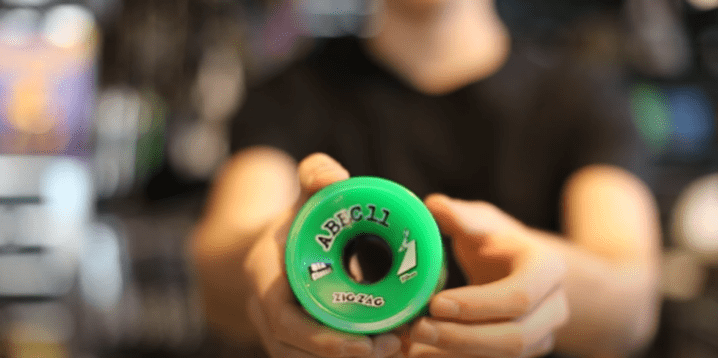

Longboard wheels are an essential part of a longboard and play a significant role in determining your riding experience. These wheels are typically made of urethane material and come in a variety of sizes, colors, and levels of hardness to match the preferences and riding style of the rider. However, it’s important to note that not all wheels are suitable for all riders and riding conditions, so choosing the right wheel is crucial.
In this guide, we’ll go into the various aspects of longboard wheels and how to choose the best one for your needs.
First, it’s important to understand the basic measurements of longboard wheels – diameter and hardness (durometer). The diameter of the wheel affects the stability and speed of your ride, while the hardness (durometer) determines how smooth the ride will be.
Other important factors to consider when choosing longboard wheels include the type of edge, the position and type of the wheel core, the contact surface, and the formula used to make the wheel.
In summary, to find the perfect longboard wheel, it’s essential to take into account your riding style, the type of terrain you’ll be riding on, and the measurements and characteristics of the wheel. With this information, you’ll be able to make an informed decision and find the right wheel for you.
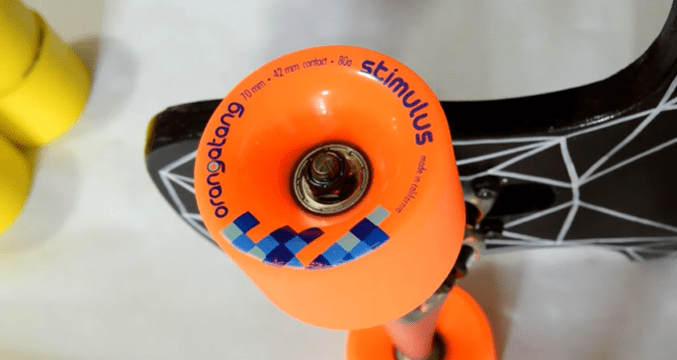

The diameter of a longboard wheel is an important factor to consider when choosing the right wheel for your riding style and terrain. The diameter is measured in millimeters and affects several aspects of your ride, including speed, acceleration, and rolling ability on rough terrain.
Smaller wheels have a lower maximum speed but accelerate faster, while larger wheels have a higher maximum speed but slower acceleration. The size of longboard wheels typically ranges from 57mm to 107mm, but the most popular size among riders is around 70mm, which offers a balance of characteristics.
When it comes to wheel diameter, there are three main groups to consider:
Ideal for skateparks, city cruising, and doing tricks, these wheels offer good acceleration but may not roll well on rough terrain.
This size offers a good balance between park and street riding, with good acceleration and the ability to roll over uneven surfaces.
This is the most commonly used size in the longboard world, offering high speed and optimal acceleration.
Designed for advanced riders in downhill and distance pushing, these wheels are focused on ease of rolling on rough terrain and maintaining high speeds.
In conclusion, when choosing the right longboard wheel, it’s important to consider your riding style, the type of terrain you’ll be riding on, and the wheel’s diameter. With this information, you can select the wheel that best suits your needs and preferences.
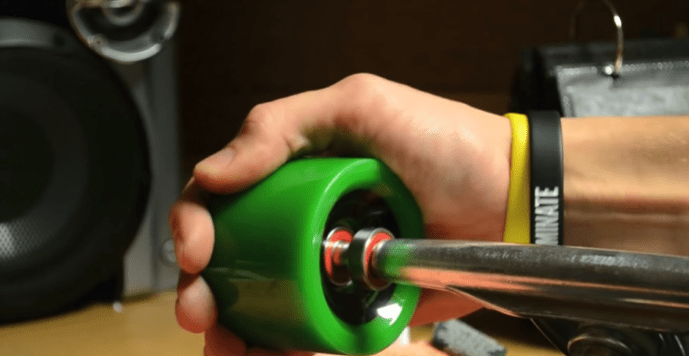

The durometer of a longboard wheel measures its hardness on a scale from 1 to 100. The most commonly used scale is Scale A, where the lower the number, the softer the wheel. Scale B measures 20 points lower than Scale A, offering a wider and more precise range of hardness, but it’s rarely used.
Harder wheels provide better grip and higher speeds, while softer wheels offer a more comfortable ride. However, the rider’s weight also affects the choice of wheel hardness as heavier riders may deform the urethane, causing the wheel to slow down, lose rolling capacity, and develop flat spots.
It’s important to note that the hardness value is just a guideline, as it can be influenced by the formula, core, and weight of the rider. The same 80a hardness formula from one manufacturer may have the same grip as the 75a hardness formula from another manufacturer.
Here are some guidelines to help you choose the right wheel hardness for your riding style and discipline:
Soft wheels for riding on rough surfaces and disciplines that require a lot of traction.
Fast wheels with little traction, suitable for freeride or disciplines where grip to the surface is not critical.
Wheels with minimal traction, typically used for street or tech slide riding. Rolling on rough surfaces may cause total vibration transfer.
The wheel’s contact surface is a significant factor to consider as it determines the area that touches the ground and not the overall width of the wheel. This characteristic is important because it helps with weight distribution, which leads to less urethane compression, resulting in reduced drag and increased speed. By having a larger contact surface, the weight is spread out over a bigger area, reducing the chances of a flat tire.
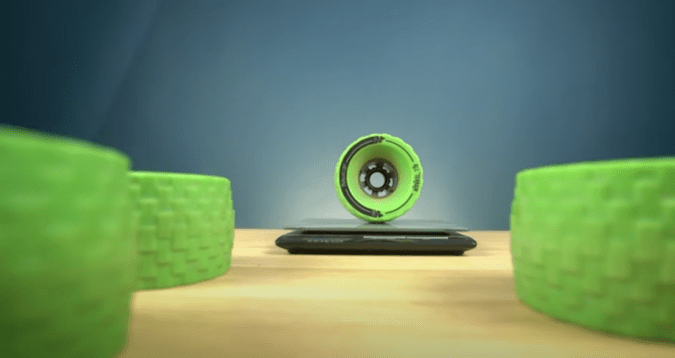

The shape of a longboard wheel is also an important factor to consider when selecting the best wheel for your needs. The shape can greatly impact the wheel’s performance, especially when it comes to cornering and skidding. Let’s take a look at the most common wheel shapes available in the market.
These wheels are known for their grip and are commonly used in disciplines such as slalom or speed racing.
Beveled edge wheels offer the best of both worlds. They have a curved shape, which provides increased contact surface for high-speed cornering, but also makes it easier to skid when necessary.
Wheels with rounded edges are typically used for freeriding as they offer less traction than square or beveled edge wheels. However, they have a larger contact surface compared to their width.
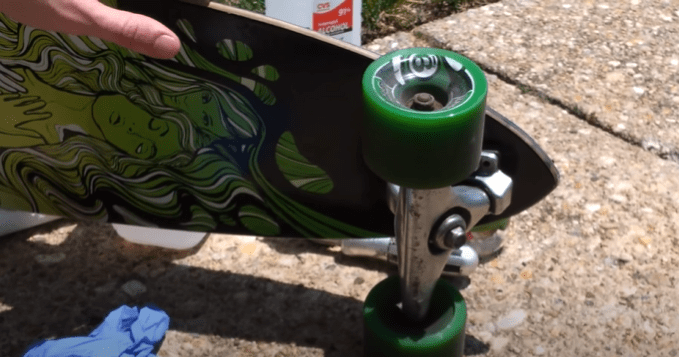

The inner part of the wheel, known as the core, plays a crucial role in its performance. The core is responsible for distributing heat evenly across the wheel, preventing it from melting or warping, and supporting the weight of the rider. The stiffness of the core can also impact the wheel’s grip and its ability to roll and wear. A harder core will result in less deformation and a smoother roll, while a softer core will provide more grip, which is essential for disciplines that require high traction.
The positioning of the rolls in the core can also affect the wheel’s performance, including its wear, grip, and skid control. There are three common types of cores that are used in wheels, each with its unique features and benefits.
In this type of core, the rolls are positioned along the inner rim of the wheel, which creates rich and controlled skids. However, the wear is not even, which can result in a conical wheel shape.
This type of core has the rolls positioned in the center of the wheel, which leads to better weight distribution and increased grip. The wheel’s ability to rotate without affecting feel or performance is also improved.
In this type of core, the rolls are positioned between the center and the edge of the wheel. The characteristics of this type of wheel vary depending on the location of the core, and it provides a balance between grip from centerset cores and skid control from sideset cores.
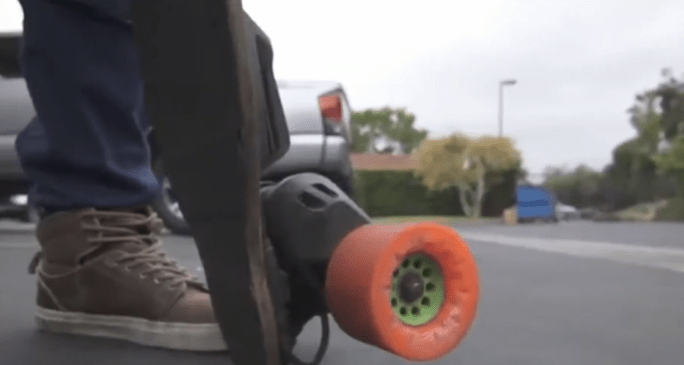

The chemical composition of the urethane in the wheels also plays a role in determining the right wheel for you. Different brands use different formulas, and some even have multiple formulas in their product line. These formulas impart unique grip, skid, and wear characteristics that work together with the shape, core, hardness, and contact surface to create a unique product.
For instance, an 80a wheel from one brand may feel like it has better skid characteristics compared to a 84a wheel from another brand. The difference lies in the formula used by each brand.
So, how do you know which formula is the best for you? The answer is straightforward – go skating and try out different wheels from different brands.
